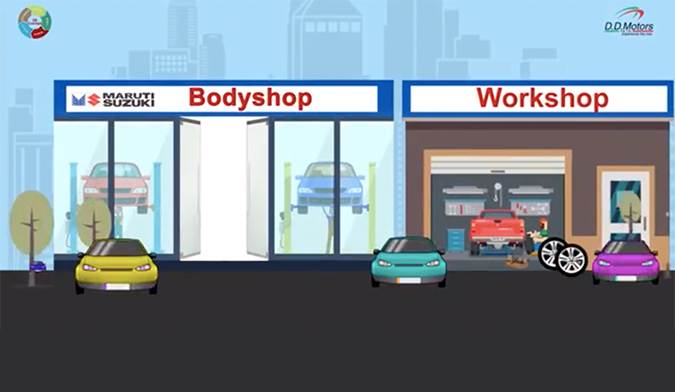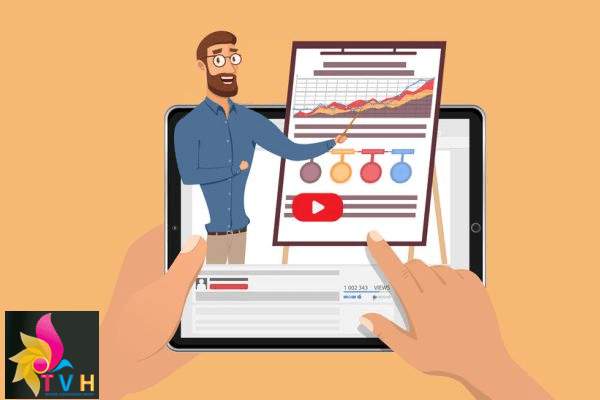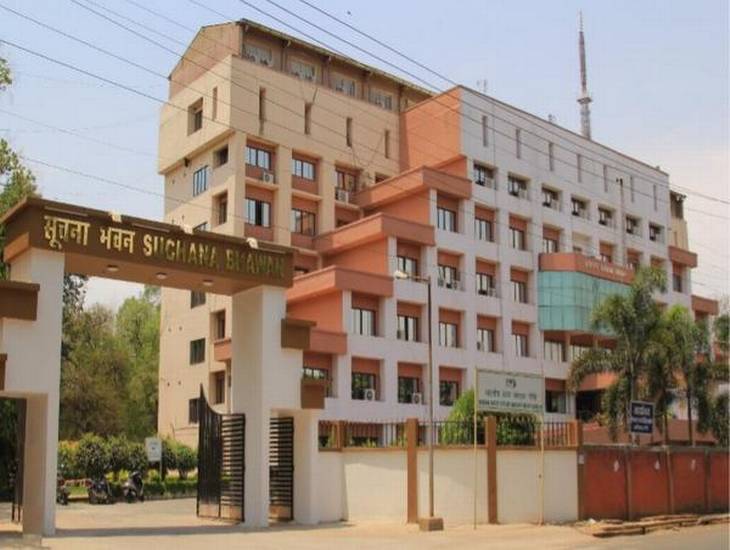

Information, Education and Communication, abbreviated as IEC, is a strategy to spread awareness through communication channels to a target audience to achieve a desired positive result. It is a strategy of sharing information through the broadcast or the print media, or interpersonal communication in a manner, appropriate to the target group’s culture and values. It is intended to instil positive knowledge for appropriate behaviour in the community which will promote preventive health measures and development. These channels of communication or IEC materials are either printed or broadcasted media such as posters, flyers, leaflets, brochures, booklets, radio broadcast or TV spots.
Why Information Education and Communication (IEC)?
IEC, BCC and SBCC are proven powerful tools for bringing social change and development. These strategies are research based consultative processes designed for addressing knowledge, attitudes and practices to bring positive changes in the behaviours and attitudes of the target groups. They define a community’s needs, create awareness, promote health education and guide them on how to exercise their rights.
An individual’s behaviour is shaped by the social, cultural, economic and political systems. With well-defined strategies and participatory practices, these strategies of communication sustain and encourage positive behaviour, eliminating social disparities.
Here Are Some of The Beneficial Attributes of IEC
Variety of Channels: IEC programs engage on different channels of communication, which is exceedingly advantageous for the dissemination of message to varied target groups.
Cost Effective: Printed IEC materials are cheap and inexpensive, thus are suitable for low budget programs. Messages intended for the masses are conveyed on broadcast medium like television, which are effective in disseminating the information to a large audience.
Building Capacity: IEC programs ushers in information, skills and knowledge to the target groups which is essential for positive health measures.
Target Specific: The participatory nature of IEC programs provide a sublime opportunity to engage with the local communities, establish good rapport and to define their specific needs. This enhances the effectiveness of the programs, provides ambient environment for evaluation, improvement and sustenance.
Feedback: IEC programs have feedback which is vital for clarifying questions, reinforcement and solving issues.
External Support: These programs can avail support from other counterparts, government, community leaders, opinion leaders, and local support groups which are tremendously helpful in monitoring, sustaining and achieving success of the programs being implemented.
Logos and symbols: Certain IEC campaigns have established outstanding logos and symbols, which has helped sustain their movements and campaigns. The ‘Red Ribbon’ and the ‘White Ribbon’ logos are instrumental in spreading awareness about HIV and AIDs and elimination of violence against women.
Entertainment: Messages catering to the needs of the individuals and groups can be conveyed through the channels in an entertaining manner captivating the attention of the audience. Jingles in radios, bulletins in televisions, or pictures and graphics are entertaining.
Strategies for Effective IEC Program Implementation in Rural Areas:
The various health and developmental programs intended for rural areas demand efficacious IEC strategies. The effectiveness of the strategies depend on building a good rapport with the community, the message appeal, the medium of communication, the feedback and the provision of supplies. It is advisable to present your message in a factual, accurate, and easy to understand manner. Pictorial representations for texts are recommended as they have lasting memory impact. The selection of an appropriate medium is paramount in conveying the message to the right audience. Taking on board the various levels of government, NGOs, and local support groups, liasioning with media for extensive coverage, providing supplies, and training IEC workers are predictors of a successful IEC campaign.
Role of IEC in Rural Development in India:
The government and social organisations, coupled with the health agencies, have extensively used IEC as an integral medium for social change and development, especially in the rural areas. In the rural areas, the dire need for resources, unsuitable economic conditions, lack of awareness and illiteracy have made these communication programs inevitable.
IEC has become an effective medium for bringing awareness, providing information, eradicating mythical beliefs, and championing the cause for health and development.
Health Sector:
In the health sector, IEC has played a pivotal role in spreading awareness and taking preventive measures. Through radio jingles, phone in programs, TV slots, and printed materials, people have been made aware of swine flu, malaria, and infectious diseases. Awareness on hygiene and sanitary, nutritional diets and programs such as RMNCH-A have been generated among the vulnerable sections in the rural areas through the IEC materials. Polio vaccination and immunization programs are widely posted and distributed in public spaces for spreading awareness. One of the most remarkable achievements of the IEC strategy is the campaign against stigmatization of HIV affected patients. Through the IEC programs, the government and health service agencies have orchestrated a much needed campaign about the condition and its vulnerabilities, which is instrumental in eliminating preconceived notions and quenching rumours.
Governmental Schemes and Rights Awareness:
The IEC programs are one of the inevitable ways of taking government policies to the grassroot level. They are pivotal in spreading awareness regarding various programs and policies to the beneficiaries, especially in the rural areas. Welfare programs undertaken by the government requires extensive participation of the rural masses. This is possible only through an extensive dissemination of the message. The importance of IEC lies in its consultative and specific research on the target groups, thus comprehending their needs and requirement. Many welfare programs undertaken by both the State and Central governments such as the PMGSY scheme for rural road connectivity, MGNREGA for 100 days of employment, Pradhan Mantri Awas Yojana for rural housing are widely circulated through the IEC materials. Besides, information for safe drinking water, hygiene and sanitation are done extensively through various IEC programs.
The real goal of IEC is the advancement of knowledge and the dissemination of truth.
.jpg)
22 February, 2024
.jpg)
22 February, 2024
.jpg)
22 February, 2024

20 February, 2024

20 February, 2024

20 February, 2024


.jpg)
12 February, 2024

12 February, 2024
.jpg)
12 February, 2024

28 December, 2023

28 December, 2023

28 December, 2023
.jpg)
04 October, 2023

04 October, 2023

04 October, 2023

16 August, 2023

15 August, 2023
.jpg)
20 June, 2023

14 June, 2023

01 June, 2023

25 April, 2023
.jpg)
21 March, 2023
.jpg)
21 March, 2023
.jpg)
21 February, 2023
.jpg)
21 February, 2023

21 February, 2023
.jpg)
03 February, 2023
.jpg)
02 February, 2023
.jpg)

11 January, 2023

11 January, 2023

11 January, 2023

28 November, 2022

28 November, 2022

14 July, 2022

31 May, 2022

10 March, 2022

26 December, 2021

29 November, 2021

29 November, 2021

23 November, 2021
.jpg)
08 October, 2021

30 September, 2021

20 September, 2021

26 August, 2021
.jpg)
26 August, 2021
.jpg)
18 August, 2021
.jpg)
10 August, 2021

02 August, 2021
.jpg)
23 July, 2021
.jpg)
15 June, 2021

05 May, 2021

27 April, 2021

21 April, 2021
.jpg)
30 December, 2020

24 December, 2020

11 December, 2020

05 February, 2021

05 November, 2020

03 November, 2020

20 October, 2020

19 October, 2020

12 October, 2020

06 October, 2020

07 September, 2020

01 September, 2020

19 October, 2020

19 October, 2020

10 July, 2020

03 July, 2020

19 October, 2020

26 May, 2020

19 October, 2020
.jpg)
22 May, 2020
.jpg)
22 May, 2020

22 May, 2020
.jpg)
19 October, 2020
.jpg)
05 February, 2021

05 February, 2021

05 February, 2021

05 February, 2021

05 February, 2021


19 October, 2020

19 October, 2020


19 October, 2020

05 February, 2021

19 October, 2020
.jpg)
19 October, 2020
.jpg)
22 May, 2020
.jpg)
09 October, 2019
.jpg)
11 September, 2019
.jpg)
26 June, 2019

25 May, 2019

04 April, 2019
.jpg)
26 October, 2019
.jpg)
14 February, 2019
.jpg)
02 February, 2019
.jpg)
30 January, 2019

30 January, 2019
.jpg)
12 December, 2018
.jpg)
05 December, 2018
.jpg)
15 November, 2018
.jpg)
07 November, 2018
.jpg)
24 October, 2018
.jpg)
12 October, 2018
.jpg)
26 September, 2018

19 September, 2018

19 December, 2018

09 October, 2019

27 June, 2018

20 June, 2018

25 May, 2018

22 February, 2019

10 May, 2018

22 February, 2019

06 April, 2018

27 March, 2018


08 February, 2018

06 February, 2018

30 January, 2018
.jpg)
16 January, 2018
.jpg)
26 December, 2017

02 December, 2017

31 December, 2018



31 December, 2018

31 December, 2018